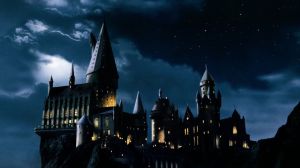Game of Thrones author George RR Martin has penned a nostalgia-filled farewell to Marvel Comics creator Stan Lee, following Lee’s death at age 95 on Monday.
Videos by ComicBook.com
The letter, titled “Farewell to a Marvel,” recalls Martin’s many meetings with Lee across a dozen San Diego Comic-Cons and recounts the author’s first words to see print in a letter addressed to Lee and collaborator Jack Kirby in the pages of 1963’s Fantastic Four #20.
“Oh, yes, I met Stan a dozen times or so, at various San Diego Comic-Cons over the years. Every time I did, it was like meeting him for the first time; he never remembered our previous meetings, and I don’t think he had any idea who I was,” Martin writes.
“It made no matter. He was always genial and generous to me, as he was to all the fanboys who surrounded him at those cons. And when I was in Stan’s presence, that’s just what I was: a fanboy, slightly tongue-tied and more than a little in awe.”
I owe so much to Stan Lee. He was, in a sense, my first publisher, my first editor. “Dear Stan and Jack.” Those were the first words of mine ever to see print. In the letter column of FANTASTIC FOUR #20, as it happens. My first published loc, a commentary on FF #17, compared Stan to… ah… Shakespeare. A little overblown, you say? Well, okay. I was thirteen… And yet, and yet… the comparison, when you think about it, is not entirely without merit. There were plays before Shakespeare, but the Bard’s work revolutionized the theatre, left it profoundly different from what it had been before. And Stan Lee did the same for comic books. I had been reading comics all through my childhood, but by the late 50s I had started to drift away from them. I was buying fewer and fewer “funny books” (as we called them back then), and more [science fiction] and fantasy paperbacks. The DC comics that dominated the racks had become so formulaic and tired, they were no longer holding my interest as they had when I was younger. I was “outgrowing” comics.
Martin recalls chancing upon 1962’s Fantastic Four #4, the first Silver Age appearance of classic comics superhero Namor the Sub-Mariner, which caught his interest “as nothing had for years.”
“A short while later, along came Spider-Man. And then the rest, one by one, in an astonishingly short period of time. The Hulk. Thor. Iron Man. Ant-Man (and the Wonderful Wasp). The X-Men. The Avengers. Wonder Man (who died in the same issue he was introduced). Black Panther. The Inhumans. Galactus and the Silver Surfer,” Martin writes.
“And the villains… Dr. Doom, Dr. Octopus, the Vulture, the Sandman, Mysterio, Loki… and on and on. (We will not talk about Paste-Pot Pete. This is a tribute).”
Martin praises Lee for the personalities and the “quirks, flaws, tempers” embedded within the colorful comic book superheroes and supervillains that revolutionized comic books in the modern age.
Characters grew and changed, and the Marvel heroes were subject to real stakes and dangers that static superheroes like DC Comics’ Superman were impervious against.
“You had to be there to understand how revolutionary all this was. Comics as we know them today would not exist except for Stan Lee. They might not exist at all, if truth be told,” he writes.
“No, of course, he did not do it all alone. The genius of Marvel’s artists, especially Jack Kirby and Steve Ditko, should never be minimized. They were a huge part of Marvel as well. But Lee was at the center of it all.”
Martin remembers his friendship with science fiction author Howard Waldrop was kindled by his letter published in the pages of Marvel’s first family, and his earliest writings in text stories — superhero stories in prose — doing his best to “write like Stan Lee.”
The author points to such influences as Lord of the Rings mastermind J. R. R. Tolkien and famed horror-fiction author H. P. Lovecraft, before crediting the importance of Lee’s early works.
“But the greatest influences are the earliest influences, I think, and at the beginning there was only Stan Lee,” Martin writes.
“Comics have had a lot of great writers in the half century since the Marvel Age began. Neil Gaiman, Len Wein, Alan Moore, and more and more and more… the list goes on and on. But if not for Stan Lee and the worlds and characters and style he created, their own careers and accomplishments would have been very different, if not impossible.”
Signing off with his boyhood New Jersey address, Martin writes:
“Dear Stan, you did good work. As long as people still read comic books and believe in heroes, your characters will be remembered. Thanks so much. Make Mine Marvel.”








